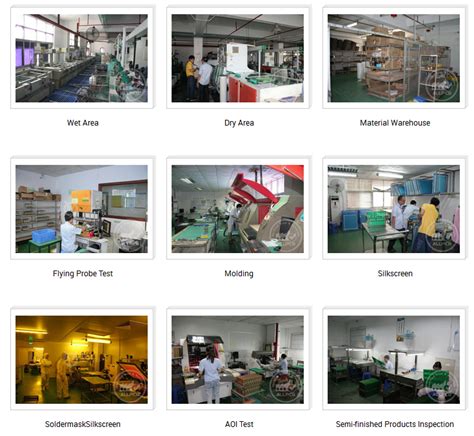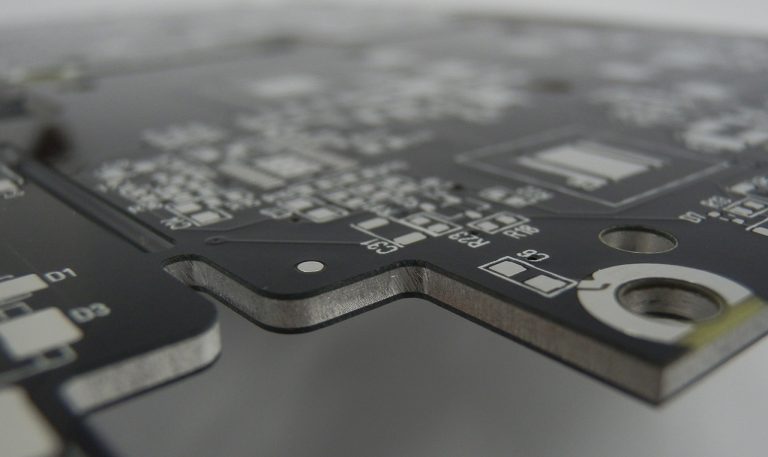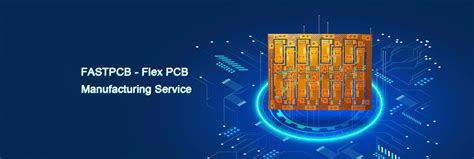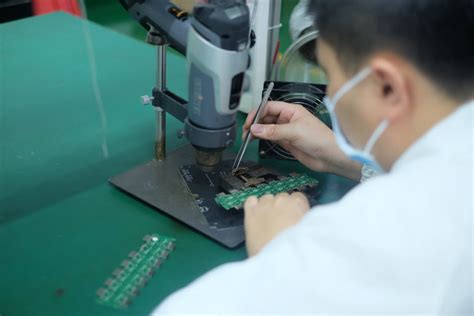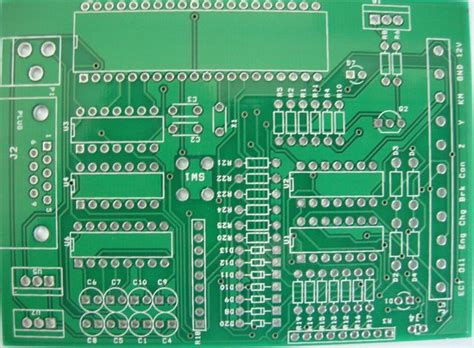The Hidden Costs of PCB Manufacturing Equipment: Revealing the Price Tag Behind a High-Tech Factory
Key Takeaways
When considering PCB manufacturing equipment, it’s crucial to delve beyond the initial purchase cost. The allure of cutting-edge technology often comes with hidden expenses that may surprise you. PCB manufacturing companies must factor in not only the pcb manufacturing cost but also ongoing maintenance, upgrades, and training for personnel. Investing in high-tech pcb manufacturing equipment requires a comprehensive cost-benefit analysis to assess its long-term viability. Understanding the pcb manufacturing business involves grappling with the complexities of supply chain integration and technological advancements that shape the industry. Whether you’re establishing a new pcb manufacturing facility or upgrading an existing one, being mindful of these factors ensures a strategic approach to financial planning and operational sustainability.
The Hidden Costs of PCB Manufacturing Equipment
When venturing into the world of PCB manufacturing, it is essential to understand the financial implications associated with acquiring PCB manufacturing equipment. While the allure of a high-tech production facility is undeniable, it is crucial to dive deeper into the price tag behind such an endeavor.
Factors Affecting PCB Manufacturing Equipment Cost
Several key factors influence the overall cost of PCB manufacturing equipment. The complexity and sophistication of your design requirements significantly impact the price. Additionally, the technology and features included in the equipment play a vital role in determining its cost. PCB manufacturing companies understand that delivering top-notch equipment comes with a substantial price tag.
Key Components of High-Tech PCB Production Facilities
A high-tech PCB production facility consists of various essential components. These include state-of-the-art machinery such as automated drilling machines, surface mount technology (SMT) assembly lines, and precision inspection systems. Moreover, you’ll need to invest in quality control tools, environmental management systems, and skilled labor for programming and operating these advanced machines.
Cost Analysis: Acquisition and Maintenance of PCB Manufacturing Equipment
When considering the financial implications of acquiring PCB manufacturing equipment, it’s essential to evaluate both the upfront costs and ongoing maintenance expenses. The initial purchase cost can be substantial, ranging from thousands to millions depending on your production requirements. However, maintenance costs should not be overlooked either. Regular calibration, replacement parts, and software updates can add up over time.
Tip: To ensure you make an informed decision about PCB manufacturing business, carefully analyze both the upfront expenses and long-term maintenance costs.
Evaluating the Return on Investment in PCB Manufacturing Equipment
Investing in high-quality PCB manufacturing equipment can yield significant returns for your business. Efficient production capabilities result in higher output volumes and improved product quality. Furthermore, reduced labor costs and minimized error rates contribute to increased profitability over time.
Quotation: “Investing in state-of-the-art PCB manufacturing equipment can be a game-changer for your business. It allows you to deliver superior products efficiently while remaining competitive in a rapidly evolving market.”
Factors to Consider When Setting Up a Home Factory for PCB Manufacturing
Suppose you are considering setting up a home factory for PCB manufacturing. In that case, various factors come into play beyond just acquiring the required equipment. Remember to consider workspace requirements, safety regulations compliance, necessary permits or certifications, sourcing quality materials at competitive prices, waste management protocols, and ensuring efficient logistics for raw materials and finished goods.
Suggestion: “Research local regulations thoroughly before setting up your home factory for PCB manufacturing as compliance is crucial throughout every step of establishing your facility.”
By understanding these hidden costs associated with acquiring PCB manufacturing equipment, you can make informed decisions that align with your business goals while maximizing efficiency and profitability. Investing in cutting-edge technology today may set you on a path towards long-term success in this ever-evolving industry.
Take control of your future by making wise choices when it comes to identifying top-quality suppliers who specialize in delivering advanced PCB manufacturing solutions suited to your specific needs.
Factors Affecting PCB Manufacturing Equipment Cost
When it comes to PCB manufacturing, one of the significant considerations is the cost of the equipment required to set up a high-tech production facility. Acquiring and maintaining this machinery involves several factors that influence the overall expenditure. By understanding these factors, pcb manufacturing companies can make informed decisions and develop strategies to optimize their investment in equipment.
1. Quality and Capability of Equipment: The pcb manufacturing process requires specialized machinery capable of handling complex tasks with precision. High-quality equipment with advanced features often comes at a higher price. Additionally, the capability to handle larger volumes, faster production speeds, and enhanced automation may result in increased costs.
2. Technology Upgrades: The field of PCB manufacturing constantly evolves with new technologies emerging on the market. Companies need to consider the cost of upgrading their equipment to keep up with advancements in the industry. This includes expenses associated with hardware upgrades, software updates, and training employees on new systems.
3. Maintenance and Repairs: Like any sophisticated machinery, PCB manufacturing equipment requires regular maintenance to ensure optimal performance. This includes preventive maintenance, calibration, and occasional repairs. The costs associated with these activities should be factored into the overall budget when considering investing in such equipment.
4. Facility Requirements: Setting up a high-tech production facility involves more than just purchasing equipment. Companies must consider additional costs like electrical infrastructure upgrades, environmental controls (such as temperature and humidity regulation), safety measures, and ergonomic considerations for employees’ well-being.
5. Regulatory Compliance: Compliance with industry standards and regulations is crucial for PCB manufacturing companies. Meeting these requirements may involve additional expenses such as certifications, audits, quality control measures, or implementing specific safety protocols – all of which can influence the overall cost of operating a PCB manufacturing business.
By being aware of these factors influencing the cost of PCB manufacturing equipment, companies can better evaluate their investment options and assess their return on investment (ROI). To succeed in this industry, it is important to work closely with reliable suppliers who understand your needs and provide competitive pricing for high-quality equipment.
If you are interested in learning more about PCB manufacturing or finding a reputable supplier for your business needs, you can visit this link for further information.
Remember that investing in state-of-the-art machinery not only impacts your initial expenses but also shapes your ability to compete in today’s dynamic market. Take your time to evaluate different options based on your business objectives before making crucial decisions regarding PCB manufacturing equipment acquisition.
Key Components of High-Tech PCB Production Facilities
In the world of modern manufacturing, PCB manufacturing requires a range of high-tech equipment to ensure quality and efficiency. The successful setup of a PCB production facility hinges on the careful consideration of various key components. Let’s delve into some essential elements that come into play when establishing a high-tech PCB manufacturing business.
1. PCB Manufacturing Machines and Tools
The core of any PCB production facility lies in its state-of-the-art machinery and tools. These include PCB manufacturing equipment such as pick-and-place machines, reflow ovens, solder paste printers, and automated optical inspection (AOI) systems. Investing in advanced and reliable machines is crucial to achieve faster production cycles, high precision, and consistent quality control.
2. Cleanroom Environment
To ensure the integrity of the printed circuit boards, a cleanroom environment is vital. This sterile workspace minimizes the risk of contamination during fabrication processes by controlling variables such as dust particles, humidity, temperature, and static electricity. Creating a tightly controlled environment is necessary for producing high-quality PCBs that meet industry standards.
3. Testing and Verification Equipment
To guarantee that each printed circuit board functions flawlessly, testing and verification equipment play a significant role. These include automated testers, boundary scan testers, x-ray machines for inspecting hidden solder joints, and environmental testing chambers for assessing product performance under various conditions. Investing in comprehensive testing equipment helps identify potential defects early on, ensuring product reliability.
4. Material Inventory Management System
Managing inventory effectively can significantly impact overall costs and productivity in pcb manufacturing companies. Implementing a robust material inventory management system allows efficient tracking of raw materials like copper-clad laminates (CCL), solder masks, chemical solutions, components, and other supplies required in PCB production. This helps prevent costly delays arising from material stockouts or excess inventory.
5. Skilled Workforce
Behind every successful manufacturing facility are skilled professionals who bring expertise to each stage of the production process. From engineers proficient in designing complex circuit layouts to technicians adept at running sophisticated machinery, assembling a skilled workforce is vital for maintaining operational excellence throughout the entire production cycle.
In conclusion, establishing a high-tech pcb manufacturing business entails careful consideration of various key components ranging from advanced machinery to skilled personnel. By investing wisely in these elements while ensuring prudent cost management practices at every level, pcb manufacturing companies can achieve efficient operations while delivering top-notch products to meet customer demands.
Keywords: pcb manufacturing, pcb manufacturing companies, pcb manufacturing cost, pcb manufacturing business
Cost Analysis: Acquisition and Maintenance of PCB Manufacturing Equipment
When considering the acquisition of PCB manufacturing equipment, it’s crucial to delve beyond the initial purchase price. Apart from the evident cost of the machinery itself, there are several hidden costs that can significantly impact your budget. First and foremost, maintenance expenses can quickly accumulate over time, especially for complex machinery used in high-tech PCB manufacturing. Additionally, operational costs such as energy consumption and raw materials must be factored in, influencing the overall cost of running a PCB manufacturing facility. Moreover, technological advancements often necessitate frequent upgrades to remain competitive in the PCB manufacturing market, adding further to the long-term financial commitment. Therefore, a comprehensive cost analysis encompassing both initial investment and ongoing expenses is indispensable when planning to establish or expand a PCB manufacturing operation.
Evaluating the Return on Investment in PCB Manufacturing Equipment
When considering the acquisition of PCB manufacturing equipment, it is crucial to evaluate the return on investment (ROI) that such a venture can yield. While the upfront cost of these machines may seem substantial, it is essential to delve deeper into the financial implications to make an informed decision.
By investing in modern and efficient PCB manufacturing equipment, pcb manufacturing companies can benefit from increased productivity, improved product quality, and reduced operational costs. These state-of-the-art machines allow for faster production cycles and higher output volumes, ensuring a competitive edge in the industry.
One of the key driving factors in evaluating the ROI is the pcb manufacturing cost incurred through acquiring and maintaining such equipment. The initial investment includes not only purchasing the machinery itself but also installation expenses, peripheral equipment, and training for staff. It is important to select reliable suppliers that offer high-quality products at competitive prices to optimize value for money.
Maintenance costs should also be considered when calculating ROI. Regular servicing and repairs are necessary to ensure optimal performance of pcb manufacturing equipment. By factoring these recurring expenses into your calculations, you can make more accurate predictions about long-term profitability.
Another aspect to evaluate is the impact on production efficiency. High-tech PCB production facilities equipped with modern equipment can streamline processes, reduce human error, and eliminate bottlenecks. This leads to higher production yields, improved product quality, and minimized waste. All these factors contribute to enhancing profitability and strengthening your position in the market.
Furthermore, by investing in state-of-the-art pcb manufacturing business, you position your company as an industry leader capable of meeting evolving customer demands for complex circuit boards. This can attract new clients as well as foster stronger relationships with existing ones, translating into increased orders and business growth.
In conclusion, when considering the acquisition of pcb manufacturing equipment, it is important to evaluate its financial implications thoroughly. The upfront cost may be significant; however, considering factors such as enhanced productivity, improved product quality, reduced operational costs, and potential business growth opportunities will help determine if investing in such machinery aligns with your long-term goals. By assessing ROI from multiple angles – including acquisition cost, maintenance expenses, production efficiency gains, and market positioning – you can make an informed decision about acquiring PCB manufacturing equipment that suits your business needs.
Factors to Consider When Setting Up a Home Factory for PCB Manufacturing
When establishing a home factory for PCB manufacturing, several crucial factors influence both initial setup costs and long-term viability. First and foremost, pcb manufacturing equipment is the cornerstone investment, encompassing machinery such as soldering stations, pick-and-place machines, and reflow ovens. The cost of this equipment can vary significantly based on the scale and complexity of your production needs. It’s essential to research multiple pcb manufacturing companies to find the best balance between upfront expenses and operational efficiency. Beyond equipment, facility space must accommodate not only machinery but also environmental controls crucial for pcb manufacturing business. Proper ventilation, temperature regulation, and static control are non-negotiable to maintain pcb manufacturing cost efficiency and product quality. Moreover, consider ongoing maintenance costs and consumables, which can impact pcb manufacturing cost projections significantly. Lastly, regulatory compliance and safety measures should be factored into your setup plan to ensure adherence to industry standards and local regulations, minimizing risks to both equipment and personnel.
Frequently Asked Questions
When considering PCB manufacturing equipment, one of the primary concerns is the initial cost outlay. Beyond the price tag of the machinery itself, you must factor in various other expenses. These include installation costs, which can vary significantly depending on the complexity of your setup and the size of your PCB manufacturing facility. Maintenance is another crucial aspect often underestimated. Regular upkeep ensures optimal performance and longevity of your equipment, mitigating potential breakdowns that could halt production and incur costly repairs. Additionally, consider the ongoing costs of raw materials and utilities, which are essential for day-to-day operations. Training your staff to operate the equipment proficiently is also vital, ensuring efficiency and minimizing errors that could lead to wastage and increased manufacturing costs. For comprehensive insights into setting up a successful PCB manufacturing business, please click here: please click here.

